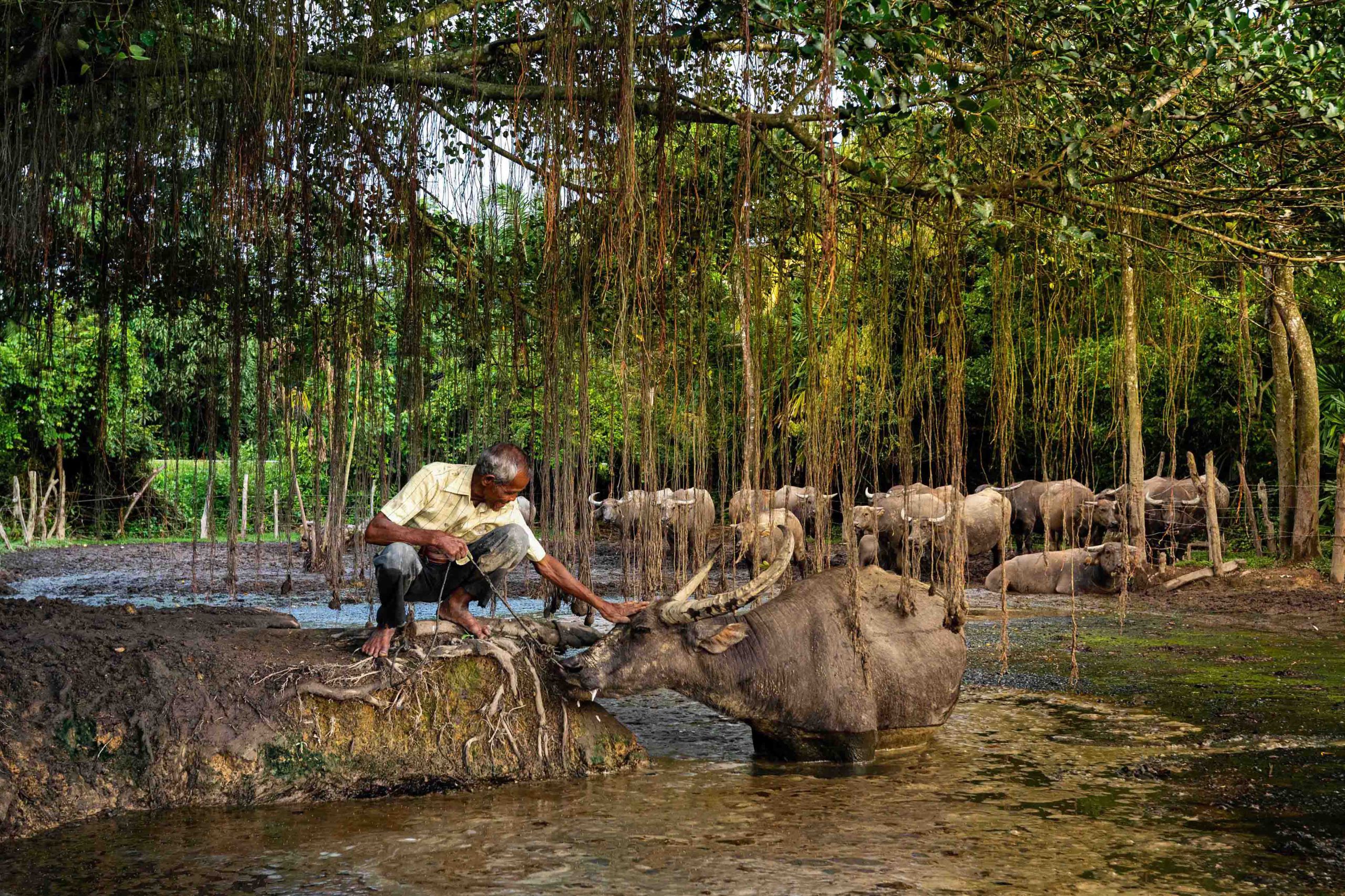Executive Summary
ABO 3 Chapters
Chapter 1
Introduction
The ASEAN region is home to some of
the world’s fastest-growing economies
where people are enjoying a new era
of prosperity. This impressive feat
partly made possible through its rich
natural resources, is now exacting
a high price from its people—the
depletion of the very resources that
support their economic advancement.
The need to balance social and
economic development with actions
that will prevent irreversible damage to
biodiversity presents one of the most
difficult aspects of the Convention on
Biological Diversity (CBD) Strategic Plan
for Biodiversity 2011-2020.
Chapter 2
AMS progress towards aichi biodiversity targets
Address the underlying causes of biodiversity loss by mainstreaming biodiversity across government and society
Chapter 3
The ASEAN Biodiversity Outlook Post 2020
The post-2020 global biodiversity framework sets an opportunity to shift the narrative from
a state of excessive consumption of and serious inattention to biodiversity to collective,
science-based, responsible, and pragmatic actions toward biodiversity conservation at
massive scales across sectors. To enable this shift, Transformative Change has to be
realised throughout the region.
ABO3 Launch
The ABO 3 launch was part of the ASEAN Strides Toward the Achievement of the Post-2020 Global Biodiversity Framework, a CBD-COP 15 side event organised by the ASEAN Secretariat, the ASEAN Centre for Biodiversity (ACB), the European Union, the Federal Government of Germany through GIZ and KfW, and Pew Charitable Trusts.
In line with the COP 15 theme, Ecological Civilization: Building a Shared Future for All Life on Earth, this side event engaged key policymakers from ASEAN Member States (AMS) to highlight progress in achieving biodiversity goals in the ASEAN region, including challenges and innovative solutions to contribute to the post-2020 global biodiversity framework (GBF).
Aichi Targets

Aichi Target: 1
By 2020, at the latest, people are aware of the values of biodiversity and the steps they can take to conserve and use it sustainably.

Aichi Target: 2
By 2020, at the latest, biodiversity values have been integrated into nation- al and local development and poverty reduction strategies and planning processes and are being
incorporated into national accounting, as appropriate, and reporting systems.

Aichi Target: 3
By 2020, at the latest, incentives, including subsidies, harmful to biodiversity are eliminated, phased out or reformed in order to minimize or avoid negative impacts, and positive incentives for the conservation and sustainable use of biodiversity are developed and applied, consistent and in harmony with the Convention and other relevant international obligations, taking into account national socio economic conditions.

Aichi Target: 4
By 2020, at the latest, Governments, business and stakeholders at all levels have taken steps to achieve or have implemented plans for sustainable production and consumption and have kept the impacts of use of natural resources well within safe ecological limits.

Aichi Target: 5
By 2020, the rate of loss of all natural habitats, including forests, is at least halved and where feasible brought close to zero, and degradation and fragmentation is significantly reduced.

Aichi Target: 6
By 2020 all fish and invertebrate stocks and aquatic plants are managed and harvested sustainably, legally and applying ecosystem based approaches, so that overfishing is avoided, recovery plans and measures are in place for all depleted species, fisheries have no significant adverse impacts on threatened species and vulnerable ecosystems and the impacts of fisheries on stocks, species and ecosystems are within safe ecological limits.

Aichi Target: 7
By 2020 areas under agriculture, aquaculture and forestry are managed sustainably, ensuring conservation of biodiversity.

Aichi Target: 8
By 2020, pollution, including from excess nutrients, has been brought to levels that are not detrimental to ecosystem function and biodiversity.

Aichi Target: 9
By 2020, invasive alien species and pathways are identified and prioritized, priority species are controlled or eradicated, and measures are in place to manage pathways to prevent their introduction and establishment.

Aichi Target: 10
By 2015, the multiple anthropogenic pressures on coral reefs, and other vulnerable ecosystems impacted by climate change or ocean acidification are minimized, so as to maintain their integrity and functioning.

Aichi Target: 11
By 2020, at least 17 per cent of terrestrial and inland water, and 10 per cent of coastal and marine areas, especially areas of particular importance for biodiversity and ecosystem services, are conserved through effectively and equitably managed, ecologically representative and well connected systems of protected areas and other effective area-based conservation measures, and integrated into the wider landscapes and seascapes.

Aichi Target: 12
By 2020 the extinction of known threatened species has been prevented and their conservation status, particularly of those most in decline, has been improved and sustained.

Aichi Target: 13
By 2020, the genetic diversity of cultivated plants and farmed and domesticated animals and of wild relatives, including other socio-economically as well as culturally valuable species, is maintained, and strategies have been developed and implemented for minimizing genetic erosion and safeguarding their genetic diversity.

Aichi Target: 14
By 2020, ecosystems that provide essential services, including services related to water, and contribute to health, livelihoods and well-being, are restored and safeguarded, taking into account the needs of women, indigenous and local communities, and the poor and vulnerable.

Aichi Target: 15
By 2020, ecosystem resilience and the contribution of biodiversity to carbon stocks has been enhanced, through conservation and restoration, including restoration of at least 15 per cent of degraded ecosystems, thereby contributing to climate change mitigation and adaptation and to combating desertification.

Aichi Target: 16
By 2015, the Nagoya Protocol on Access to Genetic Resources and the Fair and Equitable Sharing of Benefits Arising from their Utilization is in force and operational, consistent with national legislation.

Aichi Target: 17
By 2015 each Party has developed, adopted as a policy instrument, and has commenced implementing an effective, participatory and updated national biodiversity strategy and action plan.

Aichi Target: 18
By 2020, the traditional knowledge, innovations and practices of indigenous and local communities relevant for the conservation and sustainable use of biodiversity, and their customary use of biological resources, are respected, subject to national legislation and relevant international obligations, and fully integrated and reflected in the implementation of the Convention with the full and effective participation of indigenous and local communities, at all relevant levels.

Aichi Target: 19
By 2020, knowledge, the science base and technologies relating to biodiversity, its values, functioning, status and trends, and the consequences of its loss, are improved, widely shared and transferred, and applied.

Aichi Target: 20
By 2020, at the latest, the mobilization of financial resources for effectively implementing the Strategic Plan for Biodiversity 2011-2020 from all sources, and in accordance with the consolidated and agreed process in the Strategy for Resource Mobilization, should increase substantially from the current levels. This target will be subject to changes contingent to resource needs assessments to be developed and reported by Parties.
To Download the
copy of ABO 3




